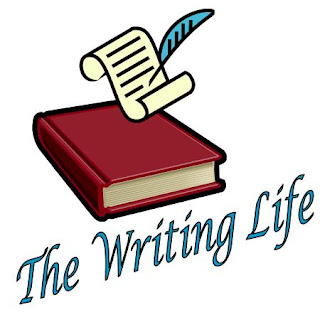
The Writing Life by JJ Murphy is a Regular Column in Writers in the Sky Newsletter. This month's article is:
How to Revise or Edit Your Work
Writing is a lot like sculpture. In both crafts you trim away the excess to reveal the art within. Sculptors chip or carve away at stone, wood or clay; writers trim words.
Here are a few tips to guide you along this process:
1. Separate your tasks. Do not begin revising as soon as you finish writing the rough draft. Go for a walk or reward yourself in some way, so you can get some psychological distance. The more emotionally or intellectually I am involved with a written piece, the easier it is to overlook gaps in logic, unclear language and other areas that need revision. Give yourself at least three or four hours, if not the next day to begin revising your work.
2. Stay on message. Some writers like to make a checklist of body copy, why readers respond, headlines and other structural elements of the work. They use these checklists to ensure that they have organized their information in a way that will make sense to their readers. Typically you will have more information about your subject than you will use. The words you choose reflect your understanding of both the subject and your readers.
3. Read the draft out loud. This is not only an important proofreading skill; it works for revising and editing as well. When you read out loud you can hear the rhythm and cadence of the piece. If you stumble on a word, that may be a tongue-twister or evidence of weak writing. If you stop mid sentence, the idea may be confusing and may need to be restated. You may need to rearrange the order of paragraphs for clarification. Obvious errors in grammar, subject/verb agreement and other problems will be easier to identify as you say the words.
4. Read the draft out loud after each revision. Is your writing clear? Do you make your point or state your argument in a way that is clear to readers? Is the tone of your writing appropriate for your audience? Are industry-specific or technical terms defined? Do your transitions move readers easily from one point to the next? Have you used paragraphs, outline form or bullets to help the reader follow your thinking?
5. Check all facts and references. Are your quotes, names of experts or sources, and all supporting materials accurate? Have you written enough to satisfy your reader?
6. Does it work? Does your conclusion tie your previous points together? Do you deliver what you promised in your opening paragraphs? A checklist can be a useful tool if there are gaps in your delivery.
7. Write more than you need. The words you end up trimming are not wasted words. Once you are satisfied with the organization of your paper, you may find a better or clearer example to support your point. Often this material is in earlier drafts.
8. Let it rest. Once you are confident that this is your best writing, don't read it again for at least one day.
9. Proofread before you publish. This is the time to check the details. Read the piece backwards to catch spelling, numerical or grammatical errors. Double check facts, read your work aloud one last time, and make sure it is letter perfect before you send it out.
By allowing the process to unfold, your can create a well crafted written piece from your notes to early drafts.
----
Platinum Level Expert Author for ezinearticles.com , JJ Murphy, offers creative nature curriculum, wild food recipes, fiction, poetry, articles and writing services for individuals, entrepreneurs, small businesses and ecologically aware companies. Visit http://www.WriterByNature.com for samples of her work.
No comments:
Post a Comment